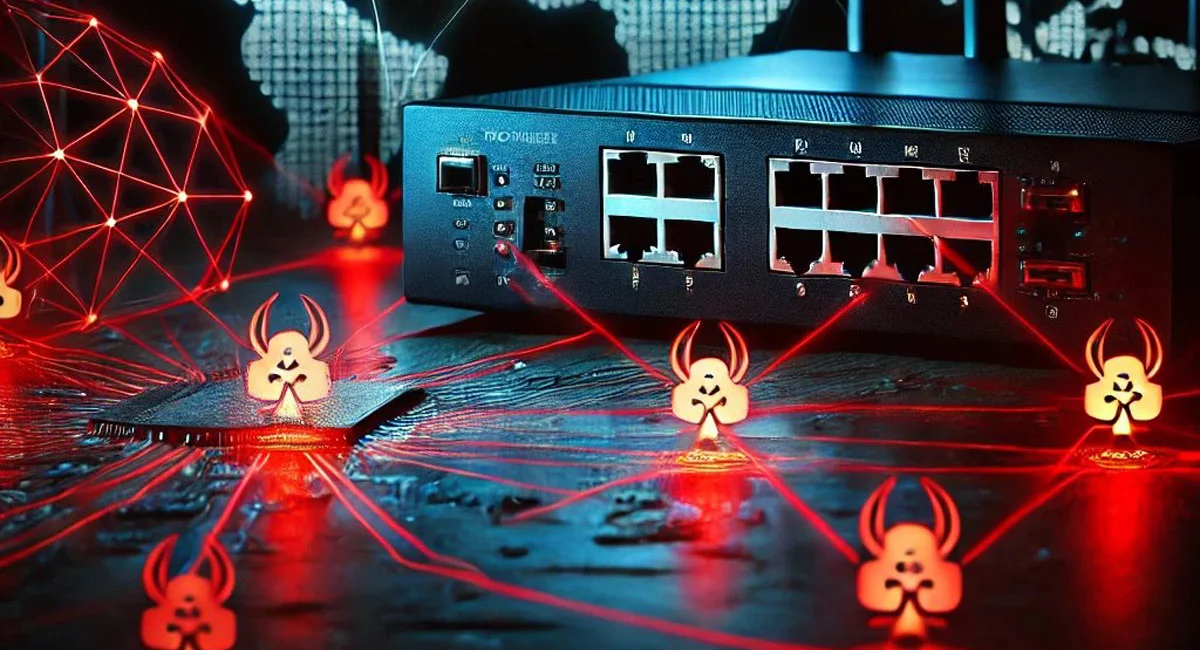
Volt Typhoon botnet protection is critical for businesses today as the Chinese state-sponsored hacking group Volt Typhoon has revived its malware botnet, targeting outdated networking devices globally.
In recent news, the Chinese state-sponsored hacking group known as Volt Typhoon has made significant strides in rebuilding its KV-Botnet malware botnet after it was disrupted earlier this year by U.S. law enforcement. Despite prior efforts to dismantle this dangerous cyber threat, Volt Typhoon is once again active, targeting outdated networking devices to infiltrate networks globally. As an MSP committed to safeguarding client infrastructure, Zevonix provides insight into this ongoing threat and offers actionable steps to protect your network from similar attacks.
Who is Volt Typhoon?
Volt Typhoon is a cyberespionage group linked to the Chinese government, known for infiltrating critical infrastructure and sensitive networks, especially within the U.S. and globally. Their cyber operations often exploit weaknesses in outdated SOHO (small office/home office) networking devices, such as Cisco and Netgear routers, installing covert malware that enables unauthorized access, data exfiltration, and routing of malicious traffic.
The KV-Botnet Returns

Following a law enforcement crackdown in January 2024 that led to a temporary dismantling of Volt Typhoon’s botnet, the group attempted a revival in February but met limited success. By August, however, the group re-emerged, exploiting a new zero-day vulnerability to resume malicious operations. Today, SecurityScorecard reports that Volt Typhoon has rebuilt a network of compromised devices in Asia, using MIPS-based malware and webshells to gain control over older Cisco RV320/325 and Netgear ProSAFE routers.
This latest iteration of their botnet—dubbed the KV-Botnet or JDYFJ Botnet—operates through non-standard ports, making it more challenging to detect. Their command servers are distributed across Digital Ocean, Quadranet, and Vultr, giving the botnet greater resilience. A VPN device in New Caledonia serves as a stealthy bridge for cross-regional traffic between Asia-Pacific and America, further obscuring their activities.
Why This Matters to Businesses and Individuals
Volt Typhoon’s strategy involves hijacking legitimate infrastructure to conceal malicious traffic, allowing the group to operate unnoticed across borders. For businesses and individuals relying on legacy routers, this threat underscores the need for proactive cybersecurity measures. While the full scope of the KV-Botnet’s intent remains unclear, compromised devices could expose sensitive data, grant unauthorized network access, and lead to financial or reputational damage.
Best Practices to Protect Against Botnet Infiltration
Protecting your network against threats like Volt Typhoon’s botnet requires vigilance and regular security practices, particularly with SOHO devices. Here are some essential steps recommended by Zevonix to secure your network:
- Replace Outdated Devices
Legacy networking devices, particularly those that have reached end-of-life status, no longer receive security updates, making them prime targets for attackers. Upgrade these devices to newer, supported models that come with robust, up-to-date security features. - Update Firmware Regularly
New vulnerabilities are often addressed through firmware updates. Check for and install the latest firmware for all SOHO routers and networking devices. Modern routers often support automatic updates, which can significantly reduce risk. - Secure Device Configurations
For devices connected to the internet, ensure that admin panels are inaccessible remotely or are placed behind secure firewalls. Additionally, change default passwords and create unique, complex credentials to prevent unauthorized access. - Implement Network Monitoring and Threat Detection
Continuous monitoring of network traffic can reveal unusual activity, like non-standard port traffic often used by malicious botnets. Threat detection solutions, such as Zevonix’s managed IT security, can alert and respond to such anomalies, preventing unauthorized access to your network. - Segment Your Network
Network segmentation can limit the spread of malware in the event of a compromise. Critical systems and IoT devices should be isolated from the main network, reducing the risk of total network compromise. - Partner with a Managed Security Provider
With evolving cybersecurity threats, partnering with an MSP like Zevonix offers 24/7 protection, proactive threat management, and swift response to security incidents. Our cybersecurity team leverages advanced monitoring tools and expertise to keep your infrastructure safe from state-sponsored and other advanced cyber threats.
Why Work with Zevonix for Cybersecurity?
In an era of complex cyber threats, Zevonix brings an extensive portfolio of security solutions to protect against even the most advanced adversaries. From proactive monitoring to network hardening and vulnerability management, Zevonix provides the tools and expertise to safeguard your operations. Don’t leave your network exposed—ensure your business continuity and data security by partnering with an MSP that stays ahead of emerging threats.
Stay Informed, Stay Protected
As Volt Typhoon demonstrates, cyber threats will continue to evolve, adapting to overcome security measures. Stay informed on the latest cybersecurity developments and consider regular audits and security reviews to ensure that your infrastructure is resilient against future threats.
At Zevonix, we’re here to guide you through these challenges with tailored, expert-driven cybersecurity strategies that keep your network secure, reliable, and resilient. Contact us to learn more about how we can support your business in a world of ever-evolving digital threats.
Source: Volt Typhoon rebuilds malware botnet following FBI disruption
Discover more from Zevonix
Subscribe to get the latest posts sent to your email.
